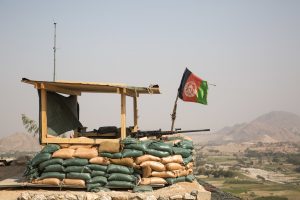The Taliban on Wednesday issued a threat to Afghan journalists they accuse of siding with Afghanistan’s intelligence agency in Kabul, a warning that came amid a U.S. troop pullout and rising fears of more violence in the war-wrecked country.
In a statement, Taliban spokesman Zabihullah Mujahid criticized those Afghan journalists who give “one-sided news in support of Afghanistan’s intelligence” service and warned them to stop or “face the consequences.”
The U.S. and Britain responded, with their embassies in Kabul quickly condemning the Taliban threat just two days after World Press Freedom Day.
“We strongly support Afghanistan’s independent media,” tweeted Ross Wilson, the U.S. chargé d’affaires in Kabul. “We condemn in the strongest possible terms the on-going violence and threats against the media, and the Taliban’s attempts to silence journalists.”
Afghanistan is considered one of the most dangerous countries in the world to be a journalist. Since 2006, as many as 76 journalists have been killed in Afghanistan, according to the U.N. Education and Cultural Organization.
Last year alone at least 15 were killed, and earlier this year, three women employed by media outlets were killed in eastern Afghanistan. The Islamic State group has claimed responsibility for some of the killings, including that of the three women. The majority of the targeted journalists have been women.
The government blames a resurgent Taliban — who now control or hold sway over half the country — for many of the targeted killings. The insurgents, meanwhile claim the Afghan intelligence service is carrying out these attacks so as to blame the Taliban.
Earlier this week, Amnesty International decried the spiraling violence against journalists in Afghanistan and the impunity of the culprits carrying out the attacks.
“Nearly all the killings, invariably carried out by unidentified gunmen, have gone uninvestigated,” Amnesty said. “Dozens of others have been injured, while journalists routinely receive threats, intimidation and harassment because of their work. Faced with this dire situation and with multiple journalist ‘hit lists’ in open circulation, many journalists are fleeing the country.”
Also Wednesday, an Afghan open media advocacy group expressed concerns about statements reportedly made by the head of the intelligence agency, known as the National Directorate of Security or NDS, criticizing some outlets he accused of carrying insurgent propaganda.
The comments by the intel chief, Ahmad Zia Seraj, were tweeted by Arif Rahmani, a lawmaker from the central Ghazni province who attended a private meeting of lawmakers with the NDS chief.
Rahmani told The Associated Press that at the meeting, Seraj was asked by lawmakers about alleged pro-Taliban coverage by some media outlets. The NDS chief said in response that there would be severe legal consequences for outlets carrying “terrorist propaganda,” according to Rahmani.
He did not name the outlets, Rahmani said. There was no immediate comment from the intelligence agency.
Last week, the remaining 2,500 to 3,500 American troops officially began leaving Afghanistan. They are expected to be out by September 11 at the latest — a deadline set by President Joe Biden.
The U.S. has openly also warned of battlefield gains for the Taliban and officials in Washington say Afghan government forces face an uncertain future against the insurgents as the withdrawal accelerates in the coming weeks.

































